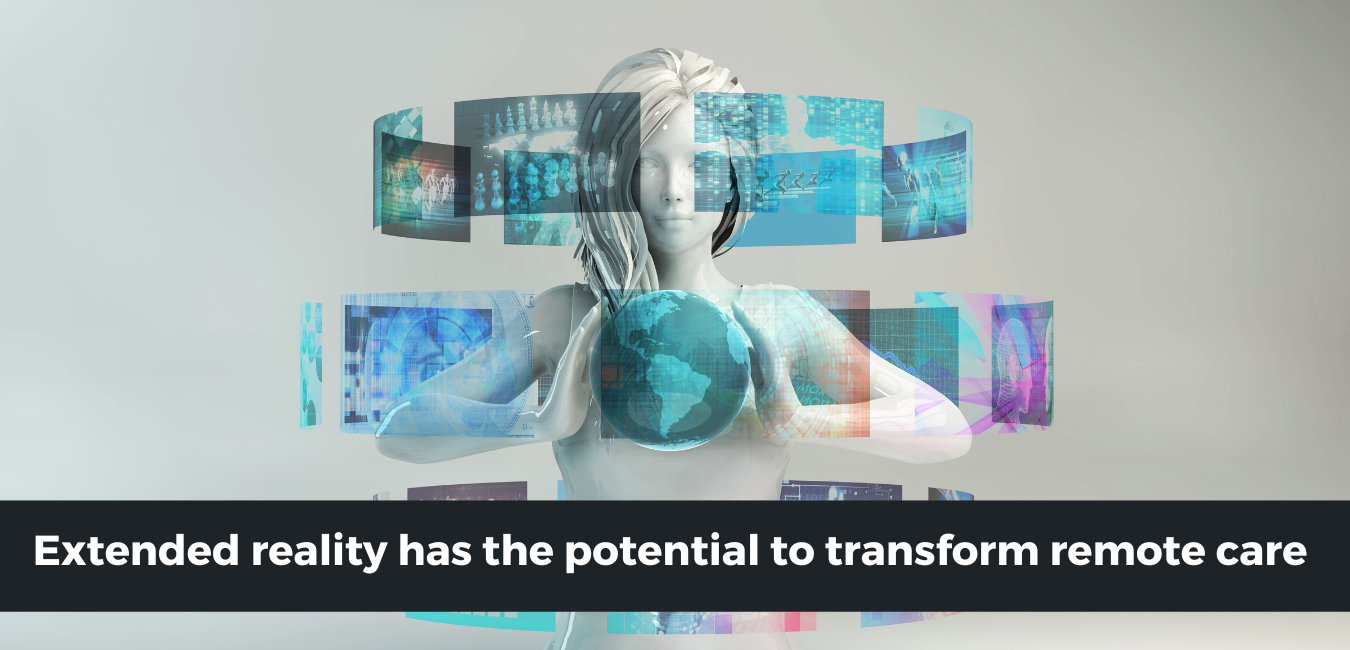Innovative Technological Advances Reshaping Chronic Care - Decoding The Facts

Did you know that chronic illness results in approximately $3.5 trillion of annual health expenditures? The rising rates of conditions like ischemic heart disease, diabetes, stroke, and age-related disorders further contribute to increasing health loss.
Moreover, the Covid-19 further made it even more challenging to manage chronic diseases. Patients suffering from pulmonary diseases, hypertension, diabetes, and other related disorders had to face the dire consequences of the pandemic.
Delayed appointments, disrupted communication, along with strict social distancing further limited such patients from getting the care. Unfortunately, the burnout of physicians during the pandemic further added to the woes. And this was a concern even before the pandemic created havoc.
On the brighter side, this pandemic highlighted the challenges faced by the practitioners in tackling chronic diseases. Here are some of the factors that might be accentuating the increase in difficulty.
Let’s find out together!
Factors Contributing towards Chronic Disease Management
Many elements give rise to an unsuccessful health care model regarding the impact of chronic disease on healthcare spending and other outcomes. Some of them include:
- Multimorbidity: How many chronic conditions arise due to the presence of other illnesses? Well! As per a study, around 50% of chronic disease patients have more than one condition. This is because of human biology, where systems are connected. Thus, triggering the shared risk factors leading to more than one chronic condition.
Further, it impacts the patients' life since they become challenging to manage over time. And eventually, that increases the overall cost.
- Behavioral attributes: They impact the progression and management of chronic diseases. The increase in the number of people leading an unhealthy lifestyle is further risking their health. Also, considering all the factors like patient psychology, socioeconomic status, and other determinants often cause a hindrance to successful treatment of such conditions.
- Inequalities in access to quality care: Let’s not forget that not everyone gets access to the same treatment and management care level. The lower socioeconomic status, language barriers, and other factors often increase the risk of developing a chronic disease.
These factors, along with many others, challenge the traditional healthcare models. This is why policymakers need to address all the factors to reduce the barriers to manage care better.
How is Innovative Technology Solutions Helping The Healthcare Providers to Improve Chronic Care?
The predictive analysis data generated from different technology solutions like machine learning, artificial intelligence, and analytics tools enable the providers to improve their operational improvements.
For example, one of the companies uses predictive analytics to optimize the $1 billion worth of spare parts inventory. Similarly, the same tools can help providers to manage chronic illness as well. For instance, the same analytics can streamline medical records, patients’ payment records, and other available data to manage a condition efficiently. Thus, halting its progress to advanced chronic illnesses.
Again, you can use the same tools to identify overdue preventive screening. Thus, enabling the providers to manage care models effectively in situations where there is a limited medical resource.
You can take the example of companies like Prealize Health, where they developed a model to predict patients at the highest risk of requiring high-cost care. Thus, allowing the providers and the customers to enhance their patient outreach efforts.
Another company HealthPals uses electronic medical record data to determine and spot the patients that are not managed using medical guidelines. Thus, providing them actionable insights to merge with the other group.
Is that all? Fortunately, the use of innovative technologies is helping chronic care management in many other ways. Keep reading to know more!
- Care Coordination/Communication: It goes without saying that software solutions have transformed the everyday operations of businesses globally. The same approach can help providers navigate the coordination/communications challenges of chronic care patients.
These software solutions can help the care teams spread at different places to communicate and coordinate the care strategies in line with the patient’s needs and progress. For instance, companies like Care team are providing collaboration tools to modern healthcare systems to improve care coordination. Other software solutions like Cricket Health primarily focus on educating the patients about chronic kidney disease.
- Digital therapeutics: It won’t be wrong to say that lifestyle choice, physical activity, and medication adherence plays a significant role in chronic disease management. Software interventions can help change patient behavior to achieve efficient patient care.
For instance, companies like Kaia Health are digitizing cognitive behavioral therapy to track patients and help them manage a variety of conditions like diabetes, hypertension, COPD, and more. In fact, one company, Pear Therapeutics, took one step further to seek regulatory approval. They want their digital therapeutics to be a part of the current pharmaceutical interventions for managing various conditions like pain, insomnia, and others.
- Telemedicine: Social-distancing measures led the providers to switch to online means to conduct everyday tasks. The pandemic further accelerated the expansion of quality care and its access for patients with chronic illnesses. Thus, making it easy for patients to obtain consultations and prescriptions whenever necessary.
This will help alleviate the staffing constraints by thoroughly distributing providers to manage chronic diseases effectively.
Final Takeaways- Innovative Solutions Improving Cost and Quality of Chronic Care Management
The rise in smartphone technology is dramatically improving connectivity and operational models. Thus, allowing us to navigate the challenges of monitoring and personalized care. Also, policies have a role to play in supporting digital innovations.
For instance, policymakers need to be more supportive of technological advances. Further, governments need to modernize their health technology to reduce the present-day challenges. Remember, innovation, and better interventions can reduce the burden of chronic disease.
As per a report, keep a close watch on these technologies to address chronic diseases. Make sure you don’t miss out on these trends, otherwise you might be at a loss. These include:
- E-visits
- Telehealth
- Telestroke care
- Digital wearables
And the list goes on! So, how are you planning to take care of chronic care? Are you using modern solutions to manage chronic care? If yes, what solutions are you using for better medical care?










